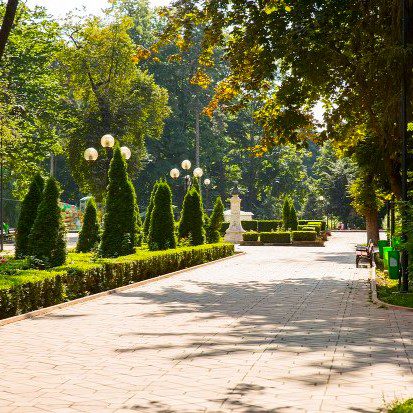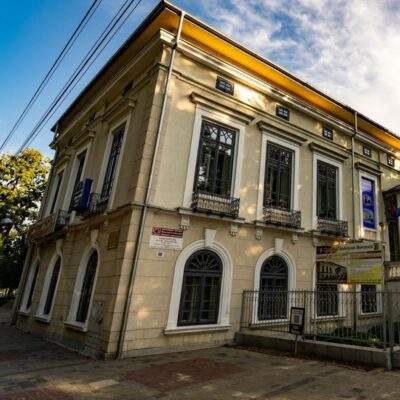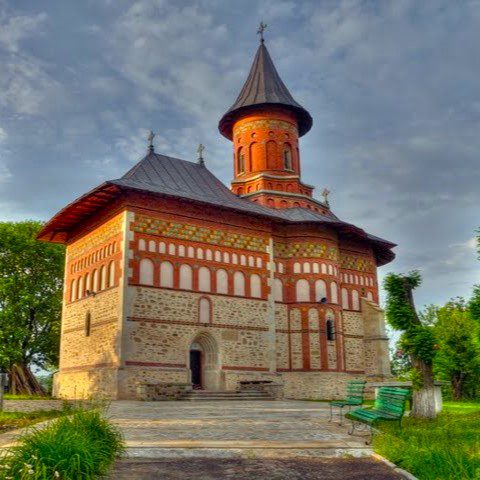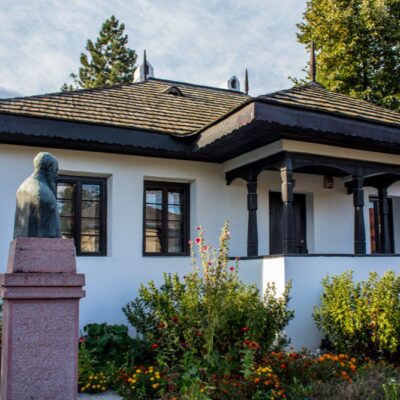Botosani is the city where traditions, folk art and ancient faith are kept alive, even today. The name of the locality is also linked to the lives f men of great importance for the culture of the Romanian people, such as the poet Mihai Eminescu and the historian Nicolae Iorga.
In addition, the city houses places of worship that are constituent elements of the religious thesaurus of Botosani. Therefore, the tourist attractions in this corner of Romanian land are varied and come from areas such as: history, culture, religion, nature, tradition.
The first official documentation of the locality was done in 1439.
“Botoșanii“, as it was known during those times, was a fair, i.e. the place where the donations were collected from the administrative-territorial unit created by the Cuman-Tatars.
Later, the town became a zonal commercial centre due to its strategic location – at the junction of some of the main roads in the country. Until the 18th century, it was the place of retreat for the rulers of Moldavia.
The city of Botoșani is the municipality of residence for the homonymous county found in the historical region of Moldova. It is located in the northeastern part of the country, in an area where high and low hills meet: to the west, the high hills of the Suceava Plateau, and to the east, the low hills of the Moldavian Plain.
The city of Botosani is located in the transition area of the two units, in a depression corridor. Thus, the landscape of the city area and the region, as a whole, is characterized by low hills and plains. Its neighbours are: to the north – Ukraine, to the east – the Republic of Moldova, to the west – Suceava, to the south – Iasi
This area is a true historical landmark, consisting of approximately sixty buildings from the 18th century. It is a fascinating blend of history and tradition, reflected in its period architecture and authentic atmosphere. The cobblestone streets, old buildings, and charming squares invite you to lose yourself in time and discover the charm of the city of yesteryear. The Old Town brings history to the present in a unique way.
With a history of over 100 years, it is one of the few such ensembles in Moldova, representing a particularly special cultural and tourist attraction

Named in honor of the most famous Romanian poet, it is a beloved relaxation spot for locals, dating back to 1869. Located in the heart of the city, it offers visitors a green oasis and tranquility, perfect for leisurely walks or moments of reflection. The winding pathways, shaded by century-old trees, and the children’s playground make this park a suitable place for the whole family, while the statue of Mihai Eminescu adds a note of solemnity and reverence to the great poet.

It is the place that brings together the most representative pieces of folk culture from the area: architectural elements, traditional costumes, furniture, and ceramics. Located in a historic building, the museum hosts an impressive collection of traditional objects, folk costumes, tools, and artifacts that illustrate the daily life and traditional activities of the local community. The museum is located on Unirii Street, number 15.
Visitors have the opportunity to discover the cultural richness and ethnic diversity of the region, turning their visit into an educational and captivating experience.

It was built in 1496 and can be likened to a fortress. The building embodies the characteristic architectural style of the Moldavian region and is a historic emblem.
It is an important place of worship and spirituality located near the city. Founded in a picturesque natural setting, the monastery exudes an atmosphere of tranquility and humility. With a rich history spanning several centuries, the monastery attracts numerous believers and pilgrims eager to meditate and pray in front of the icons and holy relics. Its traditional architecture and the beauty of the surrounding landscape make it a place of worship and meditation for all who cross its threshold.

This is the place where the famous historian, cultural figure, and Romanian politician Nicolae Iorga lived and worked. Located in a historic building in the city center, the house preserves the atmosphere and memories related to the life and activities of this illustrious figure in Romanian history: photographs, diplomas, furniture, and unpublished works.
Visitors have the opportunity to explore the restored rooms and discover permanent and temporary exhibitions dedicated to the life and work of Nicolae Iorga, paying tribute to his memory and contributing to the preservation of the national cultural heritage.

The nearest airport to Botosani is the one in Suceava, “Suceava-Salcea Airport” (33 km away). From here, there are daily flights to Bucharest and Vienna. Another nearby airport is the “Iasi International Airport” (regular flights to Vienna, Budapest, Bucharest, Timisoara). “Bacau Airport”, located about 148 km away, has flights to the major cities in Spain and Italy.
Botoșani Train Station is the bridge point between the municipality and most of the main cities in the country: Bucharest, Timișoara, Cluj-Napoca, Iași, Constanta, Suceava, Bacău and other towns.
If you prefer a faster option, you can choose to travel by bus / minibus. Here you will find all the necessary information on this plan: bus stations and stops, departure and arrival times, destinations.
If you want to get from Bucharest to Botoșani by car, the route you have to take is: Bucharest – Buzău – Focșani – Bacău – Botoșani: 450 km, about 6 hours and 50 minutes drive.

If you like music festivals, in Bucharest you will find one to your taste, regardless of the style of music you prefer. Here you have a list with some of them, but you should know that every weekend there are events for all tastes.
SummerFest Botoșani – is a music festival that takes place between 15-18 August. The goal of the organizers is to create the perfect summer setting for fun, through pool parties, concerts of established national artists, DJs and other exciting activities. The event takes place in Cornișa Park, on Neculai Sofian Street.
Come and have a good time, enjoy music, nice people and magical places.